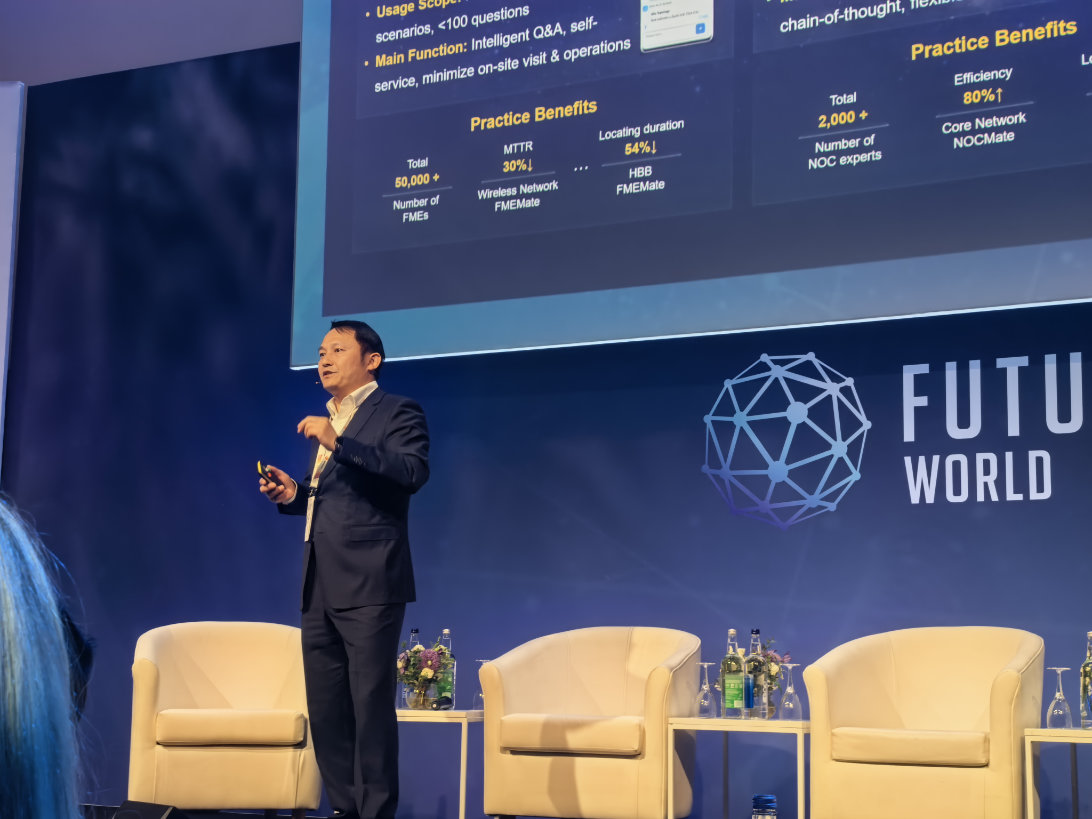Navigating the Pathway to Autonomous Networks Level 4
[London, United Kingdom, May 8, 2025] FutureNet World 2025 concluded successfully in London. As an industry platform dedicated to communications service provider (CSP) network automation and artificial intelligence (AI), FutureNet World brought together industry leaders from global leading CSPs, standards organizations, and suppliers to jointly promote the development and application of the latest technologies and accelerate network intelligence transformation. At the summit, Sam Wang, General Manager of Huawei ADN Solution, delivered a keynote speech titled " Navigating the Pathway to Autonomous Networks(AN) Level 4."

Sam Wang, General Manager of Huawei ADN Solution delivered the keynote speech
The telecommunications industry has undergone a major upgrade from 2G to 5G-Advanced. Now the successful emergence and commercial success of 6G hinge on overcoming key challenges—with network autonomy as the core enabler. To achieve AN Level 4, industry stakeholders have reached consensus on a phased transformation—from single-agent closed-loop autonomy for single scenario to multi-agent collaboration for multiple scenarios. Critical technologies are already in place: AI and GenAI advancements enhance capabilities like converged sensing and digital twin, foundation models deliver unprecedented tools for the industry, and Agentic AI accelerates AI productization.
In his speech, Sam Wang highlighted three key elements for achieving AN Level 4 commercialization this year:
1. Define High-value scenarios to plan the Level 4 blueprint–Referring to the TM Forum's AN Level 4 industry blueprint, CSPs and suppliers should prioritize high-value scenarios (e.g., fault management, network optimization) based on value-driven principles, and then align with target states, key effectiveness indicators (KEIs), and deployment roadmaps to achieve Level 4.
2. Establish industry stakeholder collaboration on the Level 4 functional architecture–Huawei proposes an AN architecture based on TM Forum's target framework with three layers and four closed-loops. At the business operations layer, CSPs should focus on value-driven principles and integrate AN into the business strategy. At the service operations layer, multi-vendor and cross-domain collaboration is significant for complex scenarios based on E2E services and Level 4 target states. At the network operations layer, single-domain autonomy is prioritized while providing simplified interaction capabilities at the service operations layer through intent-driven interfaces.
3. Leverage standardized Level 4 solution packages to drive large-scale industry deployment–Industry stakeholders, alongside TM Forum, develop Level 4 solution packages with clear guidelines on scenario baselines, values and benefits, service processes, and architecture. This provides an important benchmark for the entire industry and accelerates large-scale commercial use and replication of Level 4.
Sam Wang also unveiled Huawei's latest Autonomous Driving Network (ADN) Level 4 solution and development of copilots and agents. He mentioned that Huawei will employ the telecom foundation model to develop the Mate-series copilots for four key roles and the Spirit-series agents for seven critical scenarios. These innovations will enhance network maintenance, experience optimization, service operations, and intrinsic device capabilities, driving CSPs toward AN Level 4. Up to now, this solution has already seen successful deployments across China and global markets, demonstrating substantial business value.
As the telecommunications industry advances, AN Level 4 will be pivotal in enhancing network capabilities, enabling 5G-A, and laying the foundation for 6G.